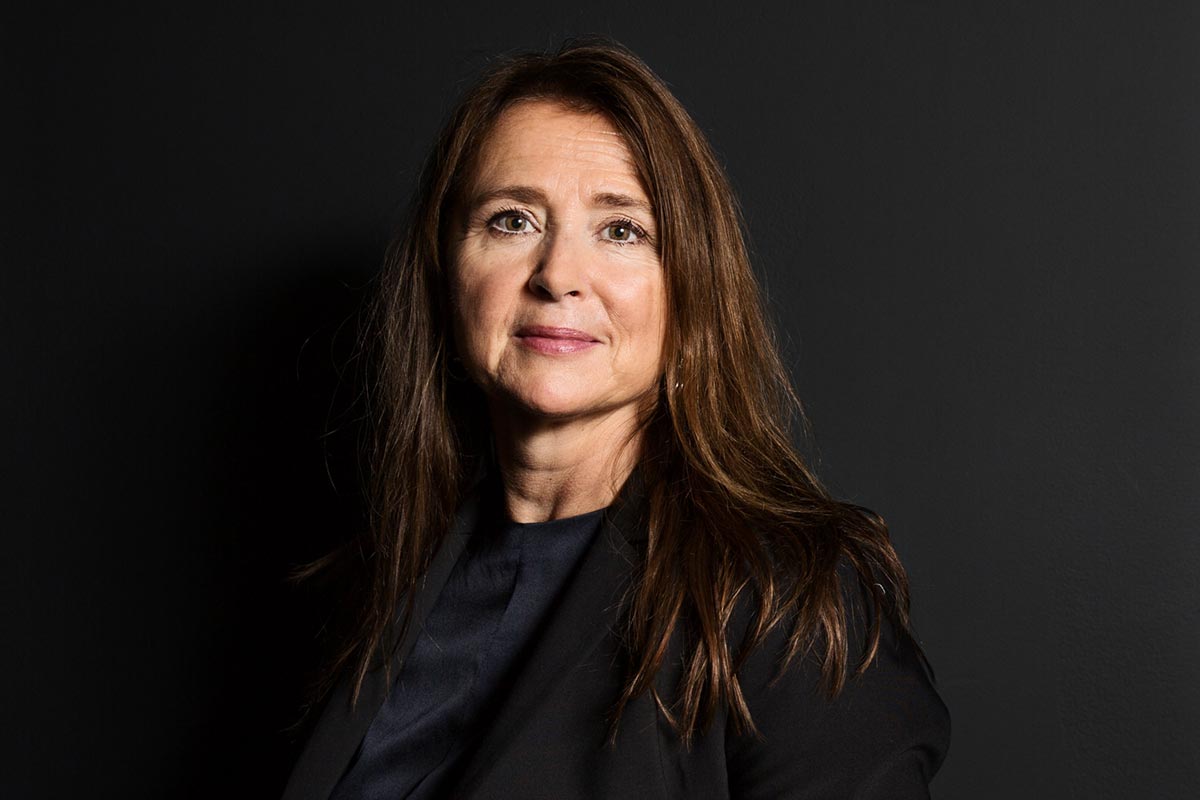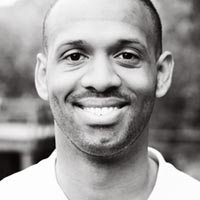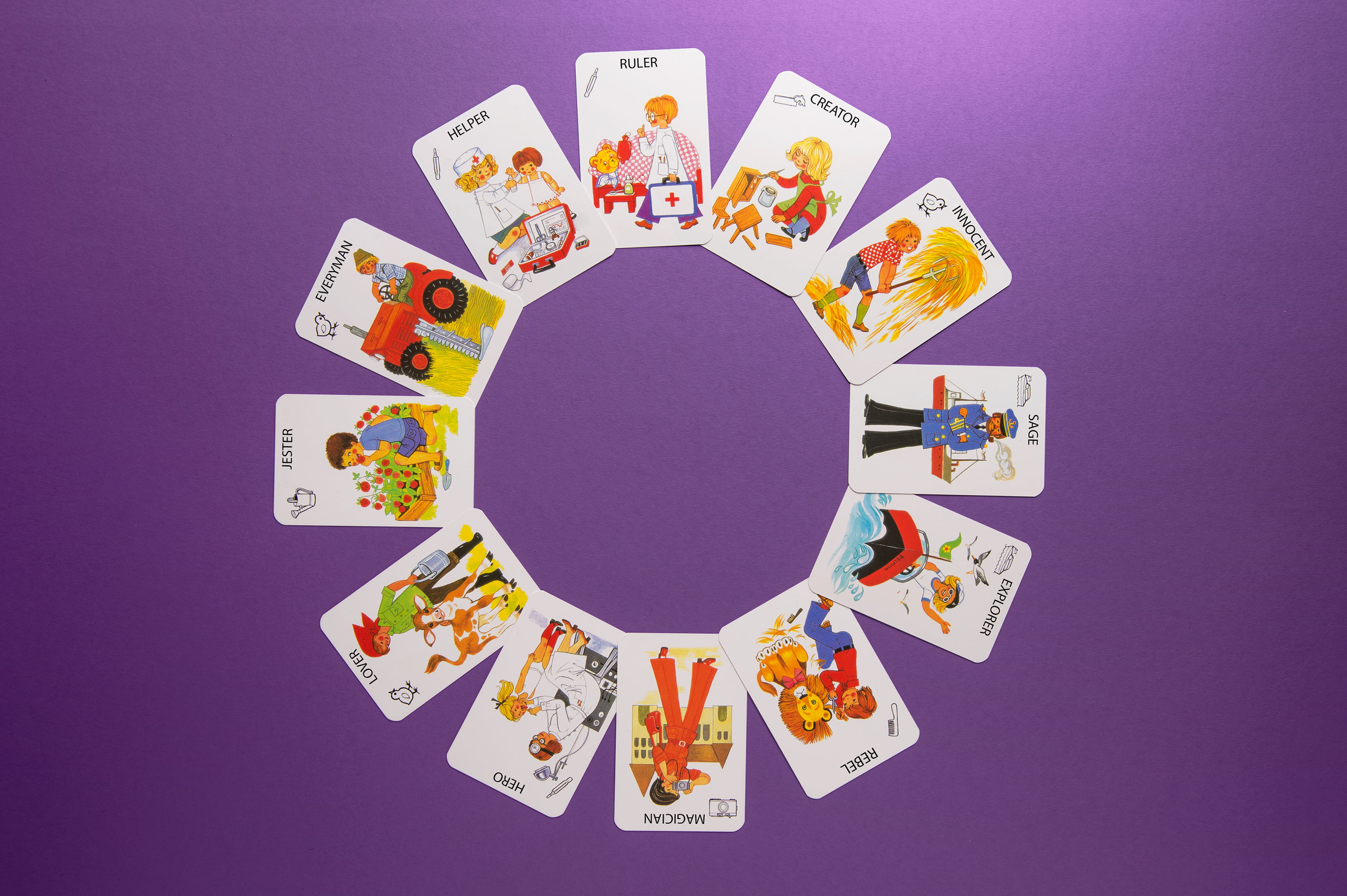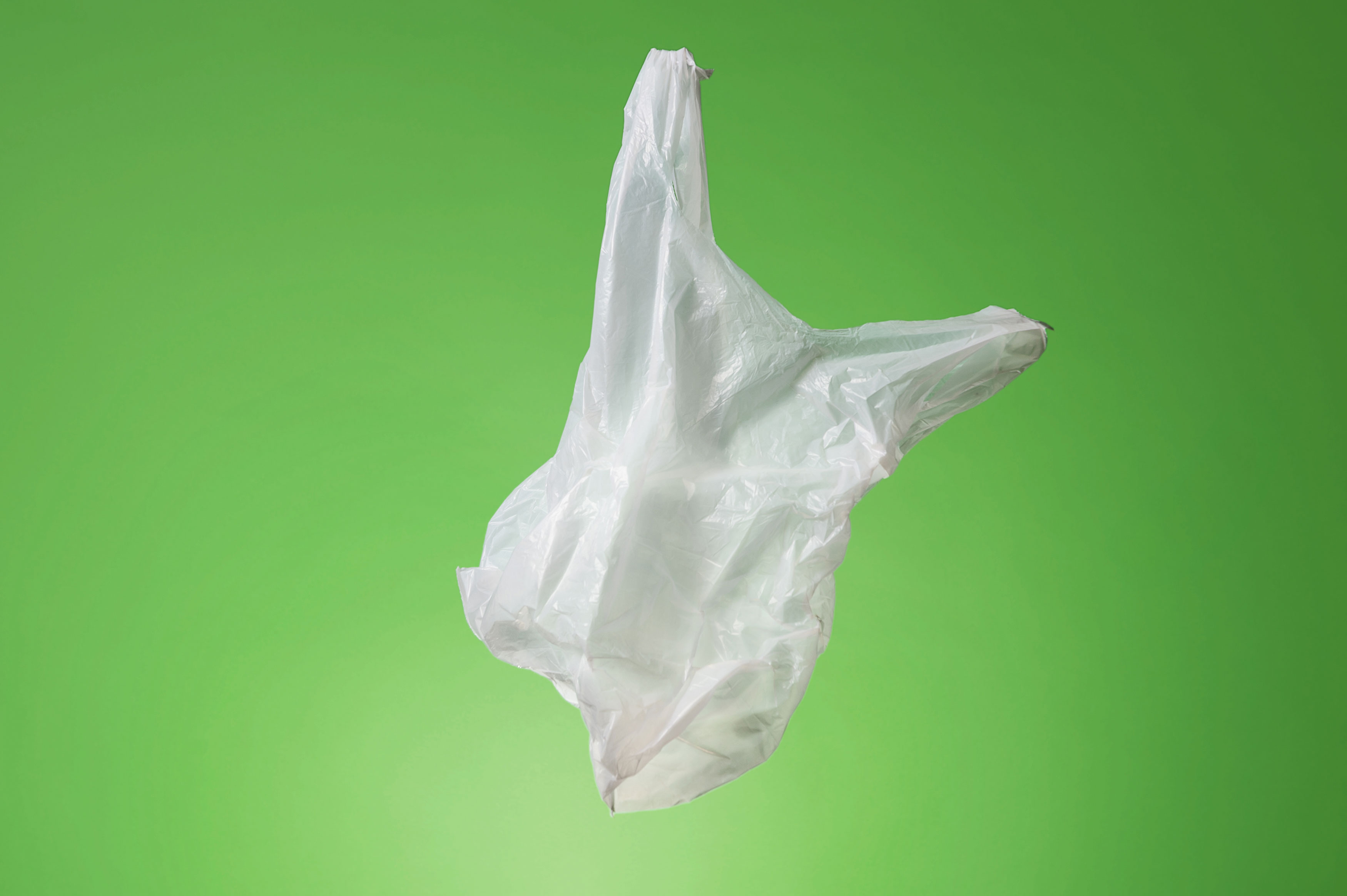Meet our people

Meet our people
Cathrine Laksfoss has turned Schibsted Distribution into a business with future potential. Meet her, Michel Dahlberg Traore from Lendo and Yassir el Ismaili el Idrissi, CEO of Schibsted Classified Media Tunisia.
“Strategy and business development are my work passions.”
A dying industry or a future potential. Cathrine Laksfoss has turned Schibsted Distribution around. The network which for many years only delivered newspapers has proven to be a business with future potential. “I am very proud that our team has turned a traditional cost center into a profitable company in only three years”, says Cathrine. In times when print revenue is decreasing, Cathrine’s job is to keep print distribution costs low and develop initiatives and startups that utilize the network to generate new businesses. The options were there from start – Schibsted Distribution, in cooperation with Amedia and Polaris, reaches 90 percent of Norwegian households and 8,000 retailers every day. “Exciting things are happening in distribution and Schibsted has unique opportunities in building a position in the intersection between distribution and marketplaces”.
The new business has two core parts. There’s online shopping with e-commerce parcels, business-to-business deliveries in the morning and a service where consumers can send parcels to one another. Then there is “morgenlevering” (morning delivery) – from which you can order breakfast to your door. And Cathrine knows the business well. Being a logistic executive with 20 years of management experience as CEO, CFO and business developer, she has spent the last five years in Schibsted.

Years in Schibsted: 5. I look forward to: The skiing season and launching our next concept.
“Schibsted’s strength is its spirit”
Lendo has become a true success story for Schibsted. The online service helps people compare interest rates on personal loans through a smooth and secure process. Michel Dahlberg Traore is now working on launching the business in new markets, currently focusing on Denmark. “This means that I’m taking care of everything, more or less. I need to understand the Danish financial system, find and sign business partners, lead product development, set up marketing plans – you name it…” Michel started on the Schibsted trainee program, where he got to work with product development at Leboncoin in Paris and on strategy in Oslo. In Stockholm he joined Aftonbladet and Schibsted Growth. “Schibsted’s strength is the entrepreneurial spirit, where companies like Lendo are run like startups. Even though we are rather large, we’re still hungry.”

Years in Schibsted: 3,5. I look forward to: Painting Europe green (with Lendo’s logo)!
Took the lead in three years
In Tunisia the marketplace Tayara has two new verticals on the way and is planning to integrate payment and delivery into the platform. So CEO Yassir El Ismaili El Drissi is a bit busy. Tayara was launched in 2013 and in less than three years it became the destination of choice for cars and real estate. Yassir joined the company in 2016 and soon decided to move the site onto the new Schibsted Rocket platform. This was a starting point for developing the business even more. “Now we have a plan to become the match maker for Tunisian people by 2020”, says Yassir. The new verticals are ImmoExpert.tn, for real estate builders and Talents.tn, a white collar job board. Hopefully the success from 2017 when Tayara was named the best site, will continue. “You know, in Tunisian Arabic, Tayara means fantastic”

Years in Schibsted: 2. I look forward to: A world led with a startup mindset.
“‘Why’ is the most important question”
As truth is under attack, Aftenposten is working systematically with explanatory journalism. “It started at the foreign desk, where it’s a very useful way of taking the next step in a story”, Hanne Waaler Lier, foreign news editor explains. Hanne is now taking the idea out to other departments at the newspaper, trying to increase the amount of stories which not only describe what’s happening, but also help the readers understand complex events. “It’s effecting our reporting in many ways. It is basic journalism, but it is easy to forget that ‘why’ always is the most important question.” The true driver behind the project is that it meets the needs of Aftenposten’s users. “We know that Aftenposten’s readers demand this type of journalism from us. And these articles get many readers”.

Years in Schibsted: 18. I look forward to: Winter. Always.
Meet our people

Meet our people
In Schisbsted we have thousands of employees all over the world, doing so many different things. Find out what some of them are working with right now.
“I like it when things are a bit hard”
In March 2018, a new personal finance service was launched from Schibsted growth; Hypoteket. Hypoteket offers digital housing loans – without involving any bank, and using Bank-ID for signing. “Many customers in Sweden are a bit unhappy with their banks, who have been making a lot money from them for a long time. We are a transparent and competitive alternative”, explains co-founder and CEO Carl Johan Nordquist. The transparency includes the same interest rate to everyone, and clarity in terms on who can get a loan. Pension funds and insurance companies are financing the loans.
And for them Schibsted has been an important partner behind the startup. “We need access to large amounts of capital so having a stable and trustworthy partner has been crucial.” The team worked on the project for two years before launch and Schibsted was involved from the start. The founders had already worked with another personal finance idea – Bolånegruppen – that didn’t take off. “I’m an engineer, but also a typical entrepreneur. I like it when things are a bit hard. And I guess it takes a bit of naivety to do things like this, otherwise you wouldn’t dare taking the risk”, he says. The challenge now is that the personal finance market is exploding, and others are starting to offer the same kind of services. “But we have a good head start, and it has gone really well so far.”

Years in Schibsted: 2. I look forward to: That The Killers haven’t given up, and are recording another album.
“We call our people advocates”
Roberto La Rosa has turned customer relations and customer insights around at Subito. Now decisions and development are based on their input. When Roberto joined Subito, customer care was outsourced. He brought it back in-house. “We call our people advocates – because they’re representing the customers’ voices”. The team talking to customers are challenged to read between the lines and really understand what lies behind a question. Then the journey to improve processes or the product begins. Every two weeks the customer team meets with the product team to give input. “When I started to speak to customers in 1999 I had the feeling that I knew things the management didn’t. So part of my mission is to close this gap, and to speak about how the customer center creates value.”

Years in Schibsted: 3. I look forward to: Automating and innovating the customer experience even more.
Simple rules to giving feedback
Dana Lin is an Employee Engagement Manager at Schibsted Marketplaces, where she looks after the employee feedback cycle and helps the team to build its culture – and she’s really into feedback. “I’d like to help people get into the habit of seeking and providing feedback on a continuous basis, and to feel comfortable doing so.” She is starting off with a semiannual feedback cycle in Schibsted Marketplaces, to provide the leadership with insights to build a better workplace. But she believes that what really makes a difference is feedback on a daily basis. “There are some simple rules to follow: ask if the person to whom you want to give feedback wants it, focus on the behavior instead of the person, and assume best intent.”

Years in Schibsted: 1/2. I look forward to: Touring around Italy and France with my mother!
Hiring talent gets tougher
There’s a big change going on in recruitment. Now the candidates are in power. The best candidates are getting multiple interviews and finding work quickly – they are picking and choosing employer. “This changes the whole recruitment process, and how we present ourselves. We need to meet new demands from the future workforce”, says Lena Berlin Stålhammar, Head of Talent Acquisition in Schibsted Media. How a candidate is experiencing a meeting is crucial, not only when it comes to getting the job or not, but to the brand itself. So Lena and her team are now implementing a tool that is measuring talents’ experience, giving them input on how to improve. And they are offering a training program to leaders on how to handle recruitments.

Years in Schibsted: 6. I look forward to: Being a part of future proofing recruitment in Schibsted by working more data driven.
We'll fight for what we believe in

We’ll fight for what we believe in
Simplicity and coherence – these are two pillars that have been the winning concept for digital leaders of today.
The world’s most successful digital companies have quickly managed to take over the world through a clear and consistent design and personality, across borders and between target groups. Google, Instagram and Facebook are platforms where you get a coherent and simple experience in all touch points. The thresholds are few and they have quickly managed to build extremely strong brands and successful global businesses. But is simplicity and coherence enough as a winning concept for brands in the future? And where does Schibsted stand in this?
Our strategy is to build companies and brands in close harmony with the local cultures and societies where we operate. Being close to our users and empowering people in their daily lives has over time made our brands a part of the fiber in the local communities. With close local relationships comes loyalty – but loyalty is not something lasting; it is something you earn.
We believe our legacy is the answer. Schibsted has a strong culture where humanistic values such as diversity, integrity, equality and empowerment characterize everything we do and have done for 178 years.
From Christian Schibsted starting the Norwegian newspaper Aftenposten in 1860 till today when marketplaces like Leboncoin, Subito and Jófogás offer smart and environmentally friendly consumerism through secondhand trade.
Coherence and simplicity
Together with our 200 million monthly users the Schibsted family can be a progressive force and make a positive change in the communities where we operate. Having a strong value set and a purpose that goes beyond quarterly result, is something we believe is becoming increasingly important in a turbulent world, where forces are questioning simple humanistic beliefs. Schibsted has gathered common resources to leverage local impact, such as a data platform, login functions, employer offering and sales. Now it’s time for us to also capture the opportunity and take agency as the unifying force behind our local heroes.
Together with our local brands, Schibsted will step up on the arena and fight for what we believe in. We will also create a coherent and simple experience through a new design system and clarify why our family of brands is connected and how we protect your data.
Because we believe that coherence and simplicity together with strong values are the keys to success.
Reality is making a comeback

Reality is making a comeback
Welcome to the fourth edition of Schibsted Future Report. This is our outlook on trends within tech, people, society and business. It’s a report from Schibsted people, from our different companies all over the world, who are sharing their knowledge and thoughts. We have also invited some of our friends, who we’ve worked closely with, to participate. We believe in openness, sharing ideas and starting conversations. I hope we will enjoy it! This is the highlights of this year’s report:
As machines know more and more about us, the need to express our humanity and responsibility increases, whether it is taking a stand for independent journalism, riding a bike into the future or shopping secondhand and speed up circular economy. It is more important than ever to have and to tell a true, genuine and consistent story. That’s how you succeed as a business – whether you’re a newspaper created by war heroes, or a global digital brand. A strong purpose, a truly good life is what we are looking for. In this year’s report, we present some of our own brands and their stories.
“Is it OK to be mean to a robot?”
2018 is also the year when we are entering the world of artificial intelligence on a broader scale. AI is now powering our everyday life. It’s part of almost all the technological solutions and services we’re using, and it’s getting more advanced by the minute: we learn to talk to machines, machines learn not only to understand but to interpret humans – even though chatting with your favorite bot still leaves room for improvement. Future Report takes on AI in a tech story comparing the progress of AI to the arrival of electricity, a change so big we can’t see the full effect yet. It will bring fundamental changes and create new industries and new solutions that we can’t even imagine. AI software is already used in such disparate areas as improving customer service, predicting disease or detecting faults in equipment. And soon our homes will be equipped with voice AI devices facilitating our daily life, voice might even be the new over all interface – and it will provide unseen new business opportunities.
This will also be the year when we see more and more robots. But with humanlike robots come existential questions like: what does it really mean to be human? And how do we behave towards them? Is it OK to be mean to a robot? The answer is no for most people.
As tech and science evolve, these questions will be high on the agenda.
So. Reality is real. Intelligence is artificial. Robots are like people. And The Future is now. Welcome to our world.
A paper of war heroes

A paper of war heroes
Few readers of Verdens Gang are proud to admit their loyalty. But VG knows how to take on a challenge and turn it into a success.
Perhaps it’s true that VG is not loved. Most people in any case are reluctant to declare their love. Some of them hate the newspaper, some fear it, but most read it. And no one, absolutely no one, is indifferent to it. VG is the newspaper that united Norway. No other newspaper has bound the country together in the same way. Big words – but at VG, we talk and write with capital letters. Therefore: without VG, the distance between the power and the people would be greater.
Summer of 1945. Some of the journalists still wore their military uniforms when they began working at the new newspaper at Akersgata 34. In the weeks before, the printers had gone all over Oslo reassembling parts that the Germans had removed from Tidens Tegn’s rotary press during the war. On June 23, the first edition of Verdens Gang hit the street. The front page headline was “What the occupation cost us”. The article was illustrated with a picture of the hated green cheques that the German occupation authorities had used to empty the Central bank. Despite warnings the editors insisted on placing a thick red line across the illustration, creating a sort of “stop” sign. This graphic device caused major problems for the printer. But the newspaper came out – with the red slash across the front page.
“While others sat on the fence, VG jumped off”
Already, VG employees were displaying an attitude that would come to typify the newspaper and make it a success. At VG we don’t take “no” for an answer. Constraints are there to overcome. Pushing the limits of the possible – and the imaginable – is in the organisation’s DNA. This attitude has produced results in the form of journalism, ethics, profitability and, in recent years, technology.
The Newspaper of war heroes
VG is the newspaper of war heroes. It was Norway’s resistance forces, the boys in the woods, who founded VG after the country’s liberation, in 1945. Decades later it would become the most popular paper in the country. The founders wanted to publish a newspaper built upon the ideals they had fought for during the long years of war: freedom and independence. VG would be independent of political parties and financial interests. It was to be a paper of the people, embodying Norway’s national feeling. But first and foremost, VG became a newspaper with faith in the future.
What the World War II resistance fighters hoped for was “a new breed of newspaper”. Just what they meant by those words is hard to say, but one possible interpretation is that they wanted a newspaper that not only represented something new at the time but that would keep changing with the country and the people. That’s what it became, anyway. Today’s employees, like those before them, have met challenges with curiosity and fighting spirit, embraced change and encouraged creativity and innovation to flourish.
VG has kept the promise of “the boys in the woods” and created “a new breed of newspaper”. Without this attribute, the newspaper most likely would not exist today. What has defined VG most is the ability to take actions that fundamentally change the status quo. VG has not always been the first to notice paradigm shifts, but it has almost always been the first to act. While others sat on the fence, VG jumped off.
The first and most significant decision in VG’s history was no doubt the commitment to independence made in 1945. Unlike many newspapers, VG had no party affiliation. It did not survive on the alms of the state or of special interest organisations. It was free in the truest sense of the word. VG belonged to no one – but its readers. VG’s independent course was crucial to its ability, decades later, to become “the paper of the people”. It fought for no single cause or ideology. The editors struck out in all directions, but first and foremost upwards – against power, on behalf of the Norwegian people.
Creativity let loose
VG’s biggest and most important transformation came in 1963. It was a turning point, and VG’s journalism thrived in the new format. Lunacy and gravitas went hand in hand, from cover to cover. The layout was bolder than that of the competition. The editors gave free rein to creativity. The headlines became more brazen, the language more precise, the story angles tougher. The tabloids were looked down on. They were light on their feet and keener to entertain than to set the agenda, it was said. VG couldn’t care less.
After Schibsted rescued the newspaper in 1966, circulation grew year by year. In 1981 VG became the country’s largest newspaper. Certainly, the most important year for VG – at least for its own future – was 1995. That’s when VG Nett was launched. While many newspapers believed that news would be distributed on cellulose for generations to come, the people running VG understood that a new age had begun. They bet on it, even though it hurt. That gave VG a head start into the digital era.
The same tabloid approach that had made the print newspaper skyrocket turned VG Nett into the country’s largest website. Its spicy mix of hard news, sports, entertainment, politicians and celebrities wrinkled the noses of the intellectual elite. But what did that really accomplish? To be important you need to have a broad impact. VG’s persona is down-to-earth and direct. The key to success is understanding social currents and lifting the problems of ordinary folks onto the politicians’ table.
For most VG readers, the print edition was their number two newspaper. First they devoured Aftenposten, Adresseavisen or their local newspaper, and then – for a different view of the world and the news – they went to the kiosk and bought VG. Norway’s largest newspaper was a supplement. In the digital age, VG is number one. For more than two million Norwegians the day begins and ends with VG. Every day almost half the Norwegian population check in to read exposés, get the latest news or be entertained. So it’s not on paper but online that VG has united Norway into one kingdom.
VG is now facing a new revolution. Print newspapers will soon be history. Desktop reading is falling, and the mobile phone is taking over. Text is no longer the preferred language. Vibrant images and sound are. And the changes are happening faster than before. Artificial intelligence could fundamentally alter the craft we now call journalism.
Never again, they said
VG’s history shows that it is capable of adapting to this change, too. Yes, it will be a challenge, but it’s possible. When the boys in the woods founded the newspaper, they did so in the ruins of a political wave that took millions of lives. Never again, they said. VG was supposed to “build bridges over antagonisms in society”. At its best, this newspaper does just that.
Compared with other countries, Norway has few antagonisms. There is little to separate the politicians in parliament from the people who voted them in. We have no nobility or cultural elite floating high above the rest of us. People converse and understand each other rather well. We trust each other, speak the same language and have the same frames of reference. An important reason is that we have a public realm that’s common to all. All Norwegians – or almost all of them – read the same newspaper.
An award-winning newspaper
1. In 2017 VG received several awards for its journalism. It was appointed the two most prestigious national awards at the yearly Norwegian Media Prize-gala – the digital site of the year and the paper of the year.
2. A story exposing illegal use of forced belt within the mental health care system was the winner at the yearly conference for investigative journalism, Skup.
3. The Lawyer and the Torpedo won the Scoop category at Schibsted Journalism Award and was appointed best digital story at the Media Prize event. It revealed the shocking story of a lawyer ordering a murder to protect his client.
Investment trends

Investment trends
Schibsted Growth keeps track of – and invests in – startups. These are three trends they’re interested in right now.
Banks will be losing power
New regulations and technology are enabling fintechs to deliver banking services without being banks themselves. Consumers can pay, lend and borrow directly from each other, and investors can target assets directly without the need for a banking middle man. Light-footed startups are assailing the profitable legacy institutions, who are fighting back for the consumer trust. The race is on!
AI taking over digital Health
Medical care is in greater need than ever for democratization and automation to handle the growing overload within the sector. What’s been the talk of the town is now becoming reality – managed marketplaces with advanced algorithms and machine learning have entered the market. The key to success is giving power to the customers and providing new working tools for professionals.
Marketplaces are getting smarter
Software has a unique way of empowering people. Besides giving access to a wealth of information, software can also empower consumers in their daily lives. Tomorrow’s digital marketplaces will be much more powerful, reinforced by even more advanced software, and they will be the foundation of whole industries. The driving forces behind the opportunities are the ubiquity of mobile devices and using data and algorithms to match the perfect buyer with the perfect seller at the perfect time.
About Schibsted Growth
Schibsted Growth looks for entrepreneurs in Internet consumer services, fintech, marketplaces, and ecommerce. Three of our latest investments were: Hypoteket, AHUM and YEPSTR. Do you have an investment opportunity for us? Tell us about it by emailing .
Play your card

Play your card
The Hero, the Ruler, the Jester. Archetypes can be powerful tools when building a brand. Facebook and Google have proved just how powerful.
How did two of our times’ strongest brands build their success? Grown out of American college campuses, with organizations packed with engineers, Google and Facebook have achieved iconic status over a short period of time in virtually all parts of the world – creating strong brand positions without spending vast amounts on marketing.
An obvious answer to these questions is that Facebook and Google have created unparalleled digital experiences that are hard to ignore for anyone exposed to them. They have certainly faced many competitors, but they have prevailed through consistently delivering on the most important criteria of their categories. But their brands also show strong archetypical traits, and that helps explain their consistency and global appeal: Iconic brands often play on archetypical references, and even though a lot of them are very complex and multifaceted, the most iconic ones are those that seem to be concentrated on just one.
“We can go back to basics”
Archetypes are powerful symbols, roles, characters and stories that transcend time and culture. Or as Carl Jung explained: “forms or images of collective nature which occurs practically all over the earth as constituents of myths and at the same time as individual products of unconscious origin.” We can say that we all know them and understand their meaning. And it makes a lot of sense when you think about it: in India, Denmark and Uganda, people will understand the archetype of the Hero, the Mother or the Ruler. At the simplest level, we all understand the various symbols connected to them. Facebook and Google have been consistently projecting the most important features of their archetypes and have brought them into this unknown landscape of the Internet.
Facebook’s core
Facebook presents the same interface to everyone, encouraging you to be open and honest, celebrating participation and ensuring that you are connected at all times and on all possible devices. At the core of the Facebook brand you find this complementary connection to the elitist origins of the product: the Harvard campus. Facebook was never intended as an opposition to the established structures of social life, it was always about creating a positive, engaging and simple way of just being a person. The most prevalent symbol of this thought is the “like” button – a brutally simple way of “paying it forward”. Facebook was, and still is, a social brand. It is always there for you and that is the true value to the The Everyman archetype.
Google is founded on an idea that you can create a better reality for yourself right now – the Internet is easier to use, safer and less complicated in Google’s sphere. The brand has so many archetypical traits of the Innocent that they are hard to ignore: Often a simple, almost naive user interface that was in stark contrast to the chaotic, stereotypical and technological competitors at the time, a name and logo that seems childish and welcoming (even the two O’s can be argued to give deep references to the eyes of a small child – a symbol also pointed to the face of the Volkswagen Beetle), the “I’m feeling lucky”- button – showing us how easy it is to have a better search experience when you just trust in exploration, the “Don’t be evil” motto…
Even though their main business is search and the advertising that comes with it, Google’s sister brands or larger projects gives an important clue too: Calico – a company that is said to basically be set out to cure death, Google Books – a project to scan and make available all books in the world naively undermining the system of intellectual property and thereby the motivation for most to write and distribute books, Project Loon – balloons hovering over Africa, providing internet access. These projects are the expressions of a company that feel that they can do it all – and instinctively we all understand how this makes sense for them. It would not make sense for a brand like IBM or Hewlett Packard, not even Apple.
It demands discipline
All this doesn’t mean that they aren’t truly business driven. And their competitors would have much to say about the true impact of their businesses. But the power of their archetype brands overtakes this aspect in our minds. It also means high risk and deep crises when they act in a way that contradicts our expectations of them being the open or honest Everyman or the Innocent.
The conscious usage of archetypical symbols or traits demands a lot of discipline from a company. And that is probably where Facebook and Google show their biggest strength when it comes to nurturing their powerful brands: it is not because they have had extensive brand consulting from the start of their companies, in fact, I think it is safe to say that they have just acted out, creating products and services that are in tune with their deeper meaning and organizations. Remember, their product is their communication. And just as nature and markets have a tendency of shaping its artifacts and culture through almost evolutionary measures, so have these brands been shaped by their first bursts of success and their failures.
Marketers have a tendency of adding layers of complexity to their brands, either to make them more current or to adapt them better to the society they operate in. Google and Facebook, together with other global digital brands like Uber (the Ruler), Amazon (the Explorer), Snapchat (the Jester) are showing us that we can go back to basics. But this requires that products and communication are created as expressions of the same core. And that core consists of stories, patterns and characters known as archetypes. Marketers need to fully understand their brand’s archetype to be able to effectively execute compelling, emotional and consistent communication over time.
Bye bye, web tv – hello online video

Bye bye, web tv – hello online video
The decline of linear TV has been a topic for a long time, today no one is questioning the fact that the way we consume TV and moving pictures has changed.
A recent study shows that 60 percent of Swedish 15–19 year-olds get all their video consumption digitally, no linear viewing at all. So OK, linear decline is a fact, but what are they watching? Of course Netflix, HBO and the traditional play channels have taken a larger and larger share of the screen time, but studies are now showing that the clip-based viewing is growing even more. Youtube, Facebook, Snapchat, Instagram, Twitch and others are all creating a new behavior on how to consume content. Watching short snackable video content wherever you are is becoming a part of daily life and a larger and larger part of all online consumption. A development in many ways driven by the large social platforms that have put video right in the center of their products as a natural part of the user experience. Mark Zuckerberg himself states:
“We see a world that is video first, with video at the heart of all our apps and services.”
“Watching TV” no longer only means sitting on the sofa consuming hour-long programs on a big screen, it has become a continuous stream of online video on all different platforms and all time of the day. A natural part of our media consumption.
Back to hieroglyphs
But not only consumption, the way of communication is also changing. The new generation is leaving text-based and voice-based communication in favor of pictures, video snippets and live broadcasts, to communicate with each other. We are in many ways seeing a visual revolution where the traditional language is changing. 5,000 years ago we communicated by painting pictographic hieroglyphs on walls, then advanced alphabets gave us tools to write and express ourselves in tremendous ways. But when looking at the communication of today, it feels like we are back where we started. Expressive text has turned into one or two emojis, a dancing lady for “lets go party” or a crying smiley-face to express joy. And why not send a short video or just keep an open video live feed between you and your friends?
“We are in many ways seeing a visual revolution”
The generation growing up in today’s Western society is brought up with a smartphone or a tablet in their hand, always with the technology at hand to watch “TV” whenever they want. Do we really think that text will be their preferred consumption medium? No. We believe that the digital industry needs to revise how they deliver content and communicate with users. For how long can a job ad or an instruction booklet consist of 5,000 words instead of an explanatory video? Is the article you are reading now really in the right content form? As a matter of fact, the younger audience is using Youtube as their first stop for searching information, instead of traditional text based search engines!
That said, it’s a fact that video is also growing in popularity as primary way of consuming news. According to Swedish research firm Ungdomsbarometern as many as 8 percent of the youngest audience (15–24 years) switched from “reading” as their favorite way of consuming news to “watching them” over the last year. There’s a clear trend of increasing time spent and video starts by the day on Schibsted’s news sites Aftonbladet and VG and we are taking great leaps of integrating video as a natural part of the news experience. But honestly, it has been quite a long way to get to where we are today.
The same journey
Every transformation takes time, you need to understand how new environments actually work and there’s a strong resemblance to earlier journeys. From being printed newspapers the papers became PDFs online, the PDF was rebuilt into a desktop site where users who happened to use a mobile phone had to zoom in to be able to read, to the native apps of today. We have made the same journey when it comes to video. From simply been producing traditional TV on the web (well, it has after all been called Web TV), long scheduled broadcasts and programs, formats that honestly do not match digital and mobile experiences, we are now getting a grip of what really works.
Content needs to be adapted to whatever device it is watched on. If in mobile, make it really short, direct to the point, start adapting to vertical viewing (as users actually like holding the phone) and integrate text (very few watch with sound). Most importantly – integrate video closely in the environment where it is present. Video should not be a separate site or destination, it should be looked upon as any other type of content that tells a story.
So, video is a fantastic bearer of engaging content, earlier reserved for the TV and the sofa experience, but now available for each and every one to enhance their experience and communication. We believe that everyone needs to embrace video to stay relevant to the new generation, but be sure to find what fits into your experience, and do not produce TV on the Web.
Reduce, reuse, rethink

Reduce, reuse, rethink
Is it the next economical evolvement or a part of the fourth industrial revolution? Circular economy is even called a necessity if we want to survive.
The concept, which is built on reduce, reuse, repair and recycle, has no founder or date of origin. But it has gained momentum since the late 1970s, led by academics, thought-leaders, NGOs and businesses. The biggest driving force, however, is Mother Nature and how she reacts to the fact that an increasing population is draining her.
The global population will reach close to nine billion by 2030 and is expected to reach eleven billion by 2100. We all consume natural resources as if we had 1.7 planets. As we’re running out of resources the logic of circular economy is indisputable. It aims to keep products, components, and materials at their highest utility and value at all times so that waste is minimized and natural resources will be used more efficiently.
“The circular economy can support businesses”
Translating the rate in which we consume the world into a personal level means basically that you and I need to halve our consumption or start to consume with twice the intelligence… It’s either that or facing the consequences that already are upon us such as water scarcity, air pollution and natural disasters where nine out of ten are climate-related.
This is nothing new. We’ve been warned for decades about the effects of our unsustainable lifestyles. But it is not until now that new intelligent ways of consuming are emerging at high speed, primarily thanks to technical and digital innovations. 3D printing revolutionizes manufacturing by reducing waste and emissions. Blockchains enable more efficient ways of pricing and selling, clean power and machine2machine systems can monitor, control and optimize lights, heating and cooling of buildings – just to name a few.
A new business model
Some people urge business to support a circular economy, but when you think about it – it’s really the other way around. The circular economy can support businesses as we’re moving towards what many predict as an unstable global market with limited access to water and energy, scarce agricultural and mineral inputs resulting in increased prices, surcharges and taxes on emissions and waste.
Since the circular economy not only aims to ensure the survival of the planet but also the survival of businesses there are innumerous cases of companies who explore and innovate within this field. Thanks to the circular concept sustainability has become a potential for reducing costs, strong competitiveness and making money. The circular economy is a USD 4.5 trillion opportunity according to the World Business Council for Sustainable Development in their CEO Guide to the circular economy.
Going from a linear economy to a circular one is of high interest, not only among companies, but also among nations such as Finland, Scotland and Japan which are in the forefront of the sustainable roadmap. Sweden is another country which is early and active. The government has recently set up an inquiry to analyze and propose policy instruments to promote increased utilization and re-use of products in order to prevent waste and to overcome barriers in the transition to a circular economy. Some of the suggestions ahead are increased access to car pools, tax deductions for rental goods, secondhand goods and repairs and increased legal rights within secondhand trade and sharing.
And the timing is right. More and more customers are becoming environmentally aware. Reports from different countries indicate that consumers prefer sustainable brands. For instance, a survey from Blocket in Sweden shows that four out of ten Swedes choose brands that actively contribute to a sustainable society. Many actors see business opportunities in the fact that the customers are waiting for corporations to enable circular consumption. According to Sustainable Brand Insight 33 percent of the Swedish population expect companies to make it easier for consumers to buy secondhand, rent and borrow things from each other.
Consume intelligently
And here is where Schibsted plays a role. With 22 marketplaces for secondhand trade all around the world and approximately 200 million users globally, we empower consumers in their daily lives to act more environmentally friendly. Secondhand trade is an important contribution to sustainability as it avoids exploitation of natural resources, reduces waste and emissions. Let’s all agree that consuming with twice the intelligence is more likely in the nearest future than cutting back.
Context trumps data

Context trumps data
Now it’s been proved – context is super important for ads in digital media. With the right audience and the right context advertisers can triple their effect.
This is shown in a study on how advertisers should navigate the digital landscape of new technology, data and purchasing methods. The study is conducted by Schibsted Sales and Inventory (SSI) and Erik Modig, researcher at Stockholm School of Economics, together with 16 advertisers from major Swedish brands.
The fact that an advertisement’s impact is significantly affected by the type of media in which it appears, might not sound like a big surprise – it has been a well-known truth within print for decades.
But within digital marketing there are many opinions about what matters, not least now that programmatic buying is growing. Some say that the context does not matter as long as the right pairs of eyes are reached, others consider the context to be key. There are also differing opinions on how to build brands and create sales. Should you advertise broadly – or focus on target audiences?
And finally, when it comes to conversion and call-to-action – what should be done then? Should slow-moving brands think in the same terms as fast-moving brands? What distinguishes high-engagement products from those with a lower degree of involvement?
The effect doubles
The SSI study focuses on the importance digital context has on the effects of advertising and how an advertiser should think regarding broad and targeted communications. It’s divided into three parts:
• The importance of the digital channel context in creating advertising effects when advertising online.
• When advertisers should choose a broad audience for their communications and when is it better to focus on a specific target audience.
• What effect different types of target audience data have.
The result shows that the context in which the advertising message is published is of great importance. On average the effect doubles with the right audience and triples with the right context and the right target group.
Therefore, even when there is a lot of data about who is being reached, the context almost always trumps data, especially when it comes to getting customers to act and, not least, with lesser-known brands.
Let the algorithm do the job

Let the algorithm do the job
How do you rate a traffic incident in Stockholm on a 1 to 5-scale? At SvD an algorithm is running the news, and tech is a way to secure the future of journalism.
The venue is the Austin Convention Center during the world’s greatest media conference, South by Soutwest (SXSW). On the stage in the largest conference hall, the Editor in chief of The New Times, Dean Baquet, is being interviewed by the paper’s media columnist, Jim Rutenberg. The theme is journalism after the election of Donald Trump; a president who calls both The New York Times and other serious media brands “fake news” and journalists “enemies of the people”. The answer from The New York Times is to hire more investigative reporters, more digital spearheads to be able to develop the journalism further.
“We are preparing for the story of our generation. The election of Donald Trump as president is a bigger news story that 9/11,” Dean Baquet says, adding: “The next two years will be a historic moment in the life of news organizations.”
The editor of the most influential news organization in the world says that the United States need more and better independent journalism. Not less. However, it is not only the case in the USA that journalism is under pressure. In countries close to Scandinavia – Poland, Hungary, Russia – media are more or less controlled by the state. Independence was swept away a long time ago and the published material is risible, ingratiating propaganda.
Banning the media
In September 2018 there will be a general election in Sweden. The rightist party The Sweden Democrats, one of the largest in the country according to opinion polls, has on several occasions banned media from their press meetings.
In one country after another forces are growing that, like Donald Trump, have the idea to question and undermine the credibility of the media, with the aim to strengthen their own power base. The question is how one, as the editor of an old established newspaper brand, can navigate in a reality that is, on the one hand, demanding more resources and initiatives and, on the other, demanding profitability. Initiatives to strengthen the trust of the readers and profitability to be able to make necessary investments. The answer is spelled “technology”.
“The answer is spelled technology”
Let’s go back in time, two years. The venue is no longer the Austin Convention Center but the editorial offices of Swedish newspaper Svenska Dagbladet in central Stockholm. A group of journalists are seated around a table, writing on small Post-It notes. The question they are asking themselves is this “What is a particular piece of news worth on a scale from 1–5? It may not be so hard to compare and evaluate a traffic incident without casualties to a terror attack in the center of Stockholm. But all those other things that happen, the news in the middle, where shall we put them on a scale?
In the spring of 2015 this was precisely what the editorial staff of SvD were discussing. We tested different news scenarios. Stock market down 4 percent (news value 3.5), the Prime Minister proposes more CCTV cameras in central Stockholm (news value 4.0). A Strindberg play opens at the Royal Theatre (2.5). These news ratings, combined with a time marker, how long we think the piece will draw interest and be relevant to the readers, are the very basic data in the algorithm that from now is going to steer our new front page. It was self-evident that it is journalism and the editors that, also in the future, are going to influence how news are evaluated on our front page.
We want to build for the future
At the same time we wanted to simplify our editorial processes and get rid of unnecessary time-consuming elements, to create space for journalistic ventures. To put it simply, we wanted to build for the future, both in technical and journalistic terms. No longer were journalists obliged to move headlines up and down on the front page. The focus was going to be placed on better content, sharper headlines, creative visual solutions and distribution of content. But above all simplicity.
Schibsted Media Platform, Schibsted’s own content management system, is built for online publishing with text tools, video, picture search and external monitoring, all in one view. As a journalist you learn to use the tool in just a few hours, which facilitates a lot in the digital transformation of the editorial staff. But let’s not become too technical. The whole point of working with algorithms and data in a newsroom is precisely so that the journalists don’t have to think about technical matters. In the last two years we have conducted a series of tests and adjustments without the editorial staff having had a clue about it. A/B tests, personalization of content to specific segments of readers, automated newsletters that are managed by algorithms, just to mention a few.
And we know that in the future, we will be testing still more things that can increase readers’ engagement and loyalty. For example; not showing certain articles that you have already read, show more premium content to loyal readers who we think can be converted to digital subscribers.
Newsrooms must be data-driven
Our vision is to take care of every visitor, giving the best news experience and at the same time supporting the business targets of SvD. And we will never be able to do that if we keep on working in the old fashion, because no editorial staff can manually deliver thousands of individual news experiences every minute, every day. In order to compete seriously with a digitalized media world, newsrooms must become more data-driven, daring to leave part of the job to the algorithms.
Two years later we can study the result. The alternated, simplified processes in the editorial rooms have led to more time for investigative quality journalism. In this period we have been awarded more journalistic prizes than ever before in the paper’s 132-year history. “The Golden Shovel”, “Revelation of the Year”, “Storyteller of the Year”, to mention a few.
And when Dean Baquet appeared at SXSW, Svenska Dagbladet and Schibstedt presented the business results for the year 2016. It showed a strong growth in digital subscriptions and digital advertizing. Altogether this produced the second best result in the paper’s history – a growth in results that runs parallel with our endeavors in journalism and technology.
Fill it with facts

Fill it with facts
Irrefutable facts, context and depth – this is how media of today should meet the ongoing challenges. This is how we can move opinions and insights and keep exposing abuse of power, injustices and lies.
The afternoon in the newsroom at the newspaper VG had been typically quiet on this somewhat slow day in July. I arrived at my work as News Editor around 1.30 pm and now, an hour or so later, we still did not have one single thing going that would make even the most excited reader raise an eyebrow. The only good thing was that Bruce Springsteen was in town.
But then: Well into the evening, the paper received a tip saying that Norway’s most famous drug criminal had escaped while having a birthday dinner in a hotel in the chain Relais & Châteaux. He had been granted leave from the prison to celebrate his 33rd birthday. With him was a 24-year-old prison guard whose task it was to make sure he did not run away. A social worker, who had visited him regularly in prison, was also invited to the dinner.
“Journalism delivers the heaviest punches when it has precise facts”
I was new to VG and to the position as News Editor, having been there for only three months, but this evening was to become decisive for my understanding of what it is that brings power to journalism.
Immediately we sent reporters to the place from which he had escaped. The prison that he was confined to was in the same town, about 50 kilometers south of Oslo. I kept in close contact with our people on the ground. Speaking with the reporter who had been at the hotel I asked: “Do you have a copy of the check?” “No, I didn’t think of that, but I believe I can get it.” An hour later a copy of the check came ticking out of the fax machine. This happened in 1988 and in those days the fax was the Hope diamond of the information technology.
I had a quick look at the check and felt instinctively that it was going to have an effect on Norwegian crime policies. I have worked in journalism for 37 years. Still, those moments when I immediately feel that this specific piece of news will have political consequences, or make life better for at least some people, are markers for the buzzing feeling of the power of journalism. And the knowledge that you have been unusually lucky in your choice of occupation.
No one carried a smartphone
The jailed narcotics smuggler obviously had expensive habits. He relished in duck breast, red wine, “marquise au chocolat” with strawberry sauce, Dry Martini and exquisite whisky in the Relais & Châteaux restaurant, before he asked to be excused and left for the bathroom. He did not come back. To grant a leave to a rough drug criminal and letting him spend a lot of money on fine food, in a place where most law-abiding citizens couldn’t afford to eat, would always create a stir, but it was the exposure of the actual check, payed by the prison employee, that really ignited the debate: Duck breast, expensive wine, Dry Martini and whisky!
“The role of journalism is to expose what others want to hide”
For me, the publishing of the check became the symbol of the fact that journalism delivers the heaviest punches when it has precise facts. When a revelation resounds with the readers it can mean that laws are changed, the political debate takes a new course or obvious faults are corrected. Without the readers’ acceptance, even the biggest of headlines can become an empty gesture rather than a solid punch.
The role of journalism is basically to expose what others want to hide, and to stimulate debate, to inform and to entertain. Different media are catering to different aspects of these elements with their output.
At the time when the drug smuggler enjoyed his duck’s breast there was no such thing as the digital motorway. No one carried a smartphone in their pocket and no one had been given the tools to bring the conversation into the public domain through social media. Digitalization has now made information limitless both geographically and in volume. Does this put new demands on how journalism is presented in order to keep its punch?
I for one think that the answer is a resounding YES. But the increasingly frequent technological shifts mean we are facing huge challenges. In a media landscape where we have moved from a scarcity of information to being burdened by the glut of it, journalism can be sorted into three categories: continuous, context and depth. I am among those who believe that speed in news is a special quality. I have never understood those who claim that the speed in news distribution, that the digitalization has made possible, is in itself a threat to quality.
Information overload
One of the most epic dramas of the previous century was the duel between Roald Amundsen and Robert Scott concerning who reached the South Pole first. On December 14th 1911, Amundsen could triumphantly place the Norwegian flag on the polar spot. Scott perished.
Aftenposten broke the news on its entire front page. It was the greatest scoop ever in the paper’s history. When? On March 8th 1912. In the history of mankind this was just a blink of an eye ago.
The speed of news today works best when it is reinforcing the punch of journalism. In the same way, the unlimited space that comes with digitalization has given us the chance to tell stories with a depth, highlight different aspects of an issue and the opportunity for readers to study the basic material in an unprecedented way. Digitalization has given us the chance to convey a new journalistic force both in the fast news and in-depth stories
A big challenge in keeping up the journalistic strength is to provide a manageable context for the published material. The general reader is suffering from “information overload.” Media is available everywhere, all the time. Content, formats and distribution channels are constantly fragmented. That makes it increasingly important to explain why it is necessary to know something about this particular subject, and to do it in a way that is neither convoluted nor distancing. We should have a focused presentation of matters that everybody ought to know something about, combined with a far more specialized delivery of special-interest stories. Communication from one to everybody has been the model of mass media. It should gradually develop into one-to-one.
Today anyone can be his or her own broadcaster. The inherent mechanisms in social media, that reinforce exaggerated views and plainly false information, are undermining the credibility of the media using an aggressive and polarizing rhetoric. Propaganda, manifestly aimed at influencing people’s opinions with a one-sided presentation of information, are passed on in the news stream in the same form and with the same expression as the most meticulous revelation.
This topography means that if journalism should have a true strength it has to present irrefutable facts in a matter-of-fact and impartial manner. We are inundated by quick-witted sentences, but I am becoming more and more convinced that it is precise facts that can move opinions. My good friend for many years as editor-in-chief of Aftonbladet and now Director of Programs at Swedish Public Service TV, Jan Helin, has put it this way: “If one was given the chance to wish for a new trend in journalism, it would be that we became able to make stars out of journalists who are opinion-resistant and who, with a passion for facts, manage to tell stories in an exciting and matter-of-fact way.”
At its best, journalism contributes to a functioning democracy by diminishing the gap between what the citizens know and what they need to know about the world around them.
The more efficient we are in exposing the squandering of resources and abuse of power, in giving a voice to the silent, in highlighting the circumstances for the weakest, the better the democracy can become. And that is precisely why the autocrats constantly are attacking the media: the aim of journalism to expose abuse of power, injustices and lies. Therein lies the Power of Journalism.
Therein lies the justification of claiming that journalism is a pillar in any civilized society. Therein lies the fundament to herald journalism as a central part of the democratic infrastructure. But every autocrat has a binary view of the world. You are either a supporter or an enemy. There is never a shade of gray – let alone 50.
That is why it is a part of the morning ritual of the Twitter President to brand us as, “The enemy of the people”, as the standard bearers of falsehood. The best answer must be irrefutable facts, the only things that can, over time, move opinions and insight, inspired by journalism.
In an era where information is increasingly gathered from social media, it is necessary to underline that those platforms do not have any general ambition to consider the varying quality of the information. Here is a quote from Adam Mosseri, VP of Newsfeed, at Facebook: “We don’t favor specific kinds of sources – or ideas. Our aim is to deliver the types of stories we’ve gotten feedback that an individual person wants to see. We do this not only because we believe it’s the right thing but also because it’s good for our business.”
So, in the Facebook world, propaganda, lies and the best journalism has the same value. For the media, this must mean an enhanced effort to make the readers more capable of differentiating between information and propaganda. That will demand an increased awareness of the value of words, a broad fact-base and a tireless focus on reporting irrefutable facts.
As any journalist would know, her most fundamental obligation is to the truth. Truth not understood like a law of science, but as verifiable facts presented in a meaningful context, with the aim to facilitate debate and eventually reach good decisions.
Likes can not be the only criteria
With such a professional ethos, it’s utterly disturbing that the chosen term to characterize the climate for public discourse these days is “post-truth”. According to the Oxford Dictionary it is an adjective defined as ‘relating to or denoting circumstances in which objective facts are less influential in shaping public opinion than appeals to emotion and personal belief’.
To paraphrase the legendary Joseph Pulitzer: The need for the noble profession of journalism, with an unequaled importance for its influence upon the minds and morals of the people, is better urgent than ever.
To uphold our ability to fulfil this honorable goal we must be aware of the importance of breadth and depth in our reporting, and consciously expose stories which are evaluated also by other criteria than popularity and likes. We must expose reality more than reality shows.
And we must be even more aware of the need to report precisely, wonderfully worded by the late journalist and author Gabriel Garcia Márquez: In journalism just one fact that is false prejudices the entire work. In contrast, in fiction one single fact that is true gives legitimacy to the entire work.
Millenials worry about online integrity

Millenials worry about online integrity
Millennials are aware that the data they leave behind is valuable – and they worry about how it is used. Future Report has compared their online habits in Sweden, France and Spain.
Millennials are the first generation to grow up surrounded by mobile technology and social media. They live in the moment and have been described as unattached, connected, free and idealistic. They also do their business in a time where personal data is currency. So, what are their view on integrity and privacy online? In this year’s edition of Future Report we find that Millennials in Sweden, Spain and France do care about their online privacy and that they do worry about integrity online.
67% of Spanish and French millennials in our survey said that they worry that the information they provide on social media can be used to influence political views.
Millennials’ digital lifestyle includes a higher number of friends on social media profiles, they share their location with friends and family, but are less likely to share their location with businesses and employers. They are also more likely to delete social media profiles entirely. Millennials are known to have little trust in companies and brands. They don’t trust companies like Facebook, even though they interact with them and share personal information with them.
In the wake of the unexpected outcome of Brexit and the presidential election in USA, a discussion about social media, fake news and the use of psychographic data became heated. Combined with the upcoming GDPR regulation, digital habits related to data security are even more important to understand. Our study shows that a majority of the millennials in Sweden, France and Spain are worried about the fact that traces you leave on social media are used to direct messages in order to influence elections.
Careful about traces
Millennials are aware that the personal data they provide has a value. A majority in all three countries say they worry about what states and companies knows about them.
Overall, millennials are careful about the digital traces they leave. This is confirmed when we ask if they have changed the settings on their smartphone in order to protect their personal integrity. Many claim to have done so. And when it comes to ad-blockers, the vast majority say they use them.
Read the full report:
Future Report 2017 Final Version
The art of doing good

The art of doing good
Enough of ruthless exploitation of nature and people! Enough of overconsumption, fast fashion and waste! The time has come for a new way of having a good life, where we all try to do better.
She was engaged in the refugee crisis in the wake of war, she knitted as part of a social movement, she was part of an international network. She shared her belongings with neighbors, minimized her waste and on vacation she did not stay at hotels but with friends. She celebrated humanistic values such as equality. She had her own career. She grew her own vegetables in her backyard and every summer she’d make lemonade and enjoyed her home-farmed salad. In the fall she harvested and saved for the winter. She had one shopping bag and of course she baked her own bread. She ate less meat and more greens, more in season and less processed food. And yes, she kept bees. A true urban hipster 2018. But no, she was my grandmother, born in 1897.
“There is a genuine will to take a stand and live a truly good life”
Several of the strong behavioral trends we see today such as the sharing economy, social engagement rather than materialistic frenzy, celebrating an environmental responsible way of living, are really just signs of a huge sobering up for the western world. Add purpose driven businesses, the former sourdough mania and recent urban beekeeping bonanza, and there’s a clear pattern. We heard the wakeup call. And there is a genuine will to take a stand and live a truly good life; to have a positive impact, however small, in the choices we make.
When political forces fail
For too long we have indulged in ruthless exploitation of our common resources, for too long we have neglected the harsh reality of the state of our planet. Today, this is so evident that even the political agenda is dictated by these insights.
And when political forces fail to deliver on that responsibility, large corporations step in, as in the case of Trump and the Paris climate agreement. Several of the largest US companies, such as Apple, Exxon Mobile and Ford declared they would uphold the agreement or continue to cut greenhouse gas emissions, disregarding the president’s decision. Tesla’s Elon Musk and Disney’s Bob Iger both left Trumps advisory councils as a consequence. Mr Iger is now being mentioned as a possible presidential candidate after also calling Trumps decision to rescind Obama’s program to allow children of paperless immigrants to remain in the US “cruel and misguided”. All of a sudden the boss of Disney is the voice of social responsibility.
But we no longer necessarily turn to politicians or established organizations to demand or make a change. We want to change the way we live our own lives, how we interact, work and consume.
“We are sort of self-curating our own life and we are very curious about how we can get more out of life. We basically want meaningful experiences,” stated the well acclaimed futurist Anne Lise Kjaer at TedxArendal in Norway recently.
When Kjaer Global listed the global trends 2020, one of them was “betterness”, in the report described as businesses and individuals joining forces to make a positive impact for the greater good of all by practices such as radical openness and social responsibility. Another trend on the Kjaer Global list was “enoughism” a term used to challenge the belief that the good life is dependent on consumption of stuff, instead we look elsewhere for new ideals to define a fulfilled life.
The good life-trend can be seen in diverse areas such as in the fundamental change in how companies attract talents – brands that give us meaning, are authentic and connect to strong values are attractive to the younger generation. The latest Deloitte millennial survey states that “opportunities to be involved with “good causes” at the local level, many of which are enabled by employers, provide millennials with a greater feeling of influence.”
And purpose is one of the strong drivers in the start up scene, young entrepreneurs not only want to be best in the world – they want to be best for the world. A responsibility more complicated than Mr Zuckerberg opted for as it turned out.
Eat what you buy
But living a better life is also about the many small things that have great impact, choosing to buy second hand or buying high quality products that can be mended – or saying no to the plastic bag you are offered to carry stuff home in.
Reducing the number of plastic bags is an international effort to save the oceans, the EU wants to decrease the number of bags to 90 (!) per person each year. Several initiatives and campaigns are already in place. When British Tesco started charging, 80 percent less bags were distributed. The Swedish initiative One Bag Habit showed a decrease of up to 70 percent. We obviously don’t need these bags and it’s an easy decision not to use them. If we do nothing, soon there will be more plastic than fish in the seas. And no turtles. So get a basket for your Saturday shopping, and more importantly: eat what you buy.
According to the EU 88 million tons of food are wasted every year in Europe – to a cost of 143 billion EUR. A third of all food produced globally is lost or wasted. An average restaurant in Europe produces more than 68,000 kilos of food waste every year. And most of it is perfectly edible. As a reaction The Ugly Food movement is giving the misshaped vegetables and bruised fruits of the world a new market instead of being dumped or rejected. French supermarkets have been required to donate all edible food to charities and shelters instead of throwing it away as in most countries. Some researches go as far as saying this is the solution to feeding the world in the future – we do not need to degrade to eating insects – we only need to use what we already have in a better way. Something to ponder on next time you think lunching on yesterday’s leftovers is not so hot.
Or you can make a change in the simple act of cooking spaghetti: Like photographer Judith Buijze from Amsterdam when she rediscovered an old household trick. She turned off the gas of her stove after boiling her spaghetti for only two minutes. She then left it in the pot with the lid on for another eight minutes and – voila!– the spaghetti was ready even though she had only used 25 percent of the gas required if she had followed the instruction on the package. She shared her experience on the social network Nudge, the information reached the CEO of the egg wholesaler Rondeel – and now the instructions on packages from Rondeel say that eggs can be boiled for only two minutes and then left in the hot water to get ready. Thus saving large amounts of gas or electricity.
Apart from being a social network Nudge is also a Dutch PR agency, specializing in changing behaviors within climate, energy and social sustainability. At the moment 60,000 activists are helping out, ready to influence their surroundings.
The skeptic might argue that all of this is for the privileged middleclass, comforting their own bad consciousness, and that these are all such small efforts that they won’t help. Fredrik Moberg, researcher at Stockholm Resilience Centre, says they do. “Of course there’s a risk of thinking that my small contribution doesn’t matter. But it does – not least as an example. We know that people are more willing to change habits and act if a friend or neighbor is doing so. And not least – politicians are carefully watching what their voters are doing.”
He also confirms the over all trend.
“There is a change, individuals and companies are taking more actions. And people are getting more and more aware. People don’t just act to be nice to nature.”
So, by living like your grandmother you might actually change the world.
Trends in worklife

Trends in worklife
The job market is changing fast. And so is the need and driving forces in the work force. These are some of the most important trends within HR right now.
Five jobs that are robot safe – for now
The question is not if, but to what extent and when, robots, automation and AI will conquer the job market. It will most likely not only replace routine, standardized tasks, but also more complex performances.
The World Economic Forum predicts that by 2020 robot automation will lead to 5 million less jobs across 15 developed nations. This might also lead to totally new roles; International Data Corporation (IDC) believes that 30 percent of leading organizations will implement a chief robotics officer role and/or define a robotics-specific function within the business by 2019. The upside might be leaving all the boring and static jobs behind and embrace the option that there could be more space for creative and artistic jobs. Here are some other suggestions on future careers, from ShellyPalmer, a list of five jobs that robots will be the last ones to take over:
1. Pre-school and Elementary School Teacher
2. Professional Athlete
3. Politician
4. Judge
5. Mental Health Professional
There are many views on this subject. One of the optimists being Kai-Fu Lee, founder of venture capital firm Sinovation Ventures. In an interview with CNBC he declared that he believes that AI will replace 50 percent of human jobs in ten years and that it will “create a huge amount of wealth for mankind and wipe out poverty”. Spanish economist Daniel Lacalle is a bit more skeptical: “Evidence shows us that if technology really destroyed jobs, there would be no work today for anyone. The technological revolution we have seen in the past 30 years has been unparalleled and exponential, and there are more jobs and better salaries.”
Another interesting thing to keep in mind: throughout history, we have invented tools to lighten our burden, but we don’t seem to have gotten more spare time.
Life-long learning will attract talents
In the ever-changing world a lot of things will also be different from a HR perspective. The future workforce will be made up of a wider range of ages, nationalities and ethnicities than ever before. This means that companies need to build an inclusive culture where everyone feels welcome. There will also be a need for lifelong learning, as more and more people will work for a longer time. The old model of learning a profession first, then sticking to it ever after simply isn’t doable. Enabling lifelong learning and being a true learning organization will be a competitive advantage.
Instability is affecting Millennials
For some time we’ve heard of the ”gig” economy – basically consisting of millennials not that keen on having a permanent job and wanting to own their career and development. It turns out, this seems to be connected to age and the outside world. As millennials get older and when surrounded by instability, the need for a secure income and base are more important. The millennials have also been known to be value-driven, but research reveals that pay and financial benefits drive millennials’ choice of organization more than anything else.
The global job market might be history
Will Brexit and Trump disturb the globalization of labor? In recent years the opposite has become a concern for many businesses. Global talent boundaries have been eroded and the job market has become an international arena, making the competition for key talents harder. Not least when it comes to tech talents who are the true winners, because of the technological advances. But recent events, like Brexit and the election of Donald Trump, might lead to new regulations and requirements that will make working abroad more difficult, indicating that we will have a more de-globalized job market ahead.






